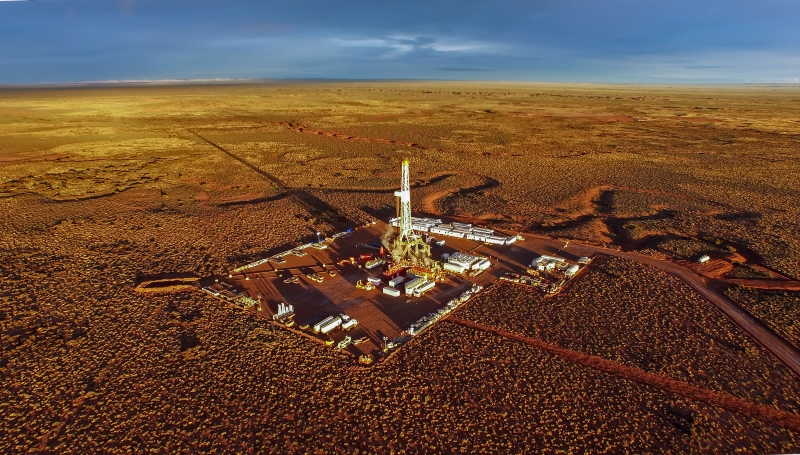Understanding fractures in 3D
The reason why cracks start, spread and end in such an unpredictable way has been discovered by an inter-disciplinary group of international researchers.

Aerial photo of hydraulic fracturing equipment at sunset.
© Shutterstock/Sobrevolando PatagoniaThe project’s findings, published in Nature Physics, provide a deeper understanding of the lifecycle of fractures, and could improve our understanding of materials science, earthquakes, and production of geothermal energy, oil and gas.
Hydraulic fracturing, known as fracking, is the process of creating fractures in rocks by injecting pressurised fluids into the ground to generate a network of connected cracks. This process is also observed in nature, for example, in the formation of magmatic dykes.
To understand fractures in 3D, the team introduced a crack in a transparent material, and then injected liquids of varying viscosities.
Using a high-speed camera that can capture 100,000 images per second with a spatial resolution of a couple of micrometres and cutting-edge acoustic emission sensors, the team could visualise and listen to the dynamics of fractures as they spread through the material.
The team reports that, rather than moving through a material like a continuous wave, fractures move in starts and stops, propagating from their origin in a material outward through a series of high-speed jumps.
The amplitude and the time between these jumps depend on the viscosity of the liquid.
With low-viscosity liquids, like water, the time between jumps is miniscule as the fluid penetrates the crack almost instantaneously.
With higher-viscosity fluids, like glycerol, which has viscosity like honey, the lag between the fracture front (where the crack is) and the fluid front (where the liquid tip is) increases as it takes longer for the high-viscosity fluid to penetrate the crack and expand it.
The work is supported by the US National Science Foundation through the Harvard Research Science and Engineering Centre (MRSEC), in a collaboration between material scientists, engineers, geophysicists and seismologists from the University of Nottingham, Harvard, the China University of Petroleum (Beijing), Tufts University, the University of Washington, and the Hebrew University of Jerusalem.
Gabriele Albertini, Assistant Professor at the University of Nottingham and co-author, says, ‘We also developed a numerical model that builds on the same mathematical equations and assumptions of fracture theory, but is fully three-dimensional.
‘We discovered that the simulation was able to reproduce the experimental data in a quantitative manner, with no fitting parameters. This emphasises the generality of our finding, which is applicable to fractures that arise in a wide range of scenarios and not just in the specific case of a fluid-driven crack.’







